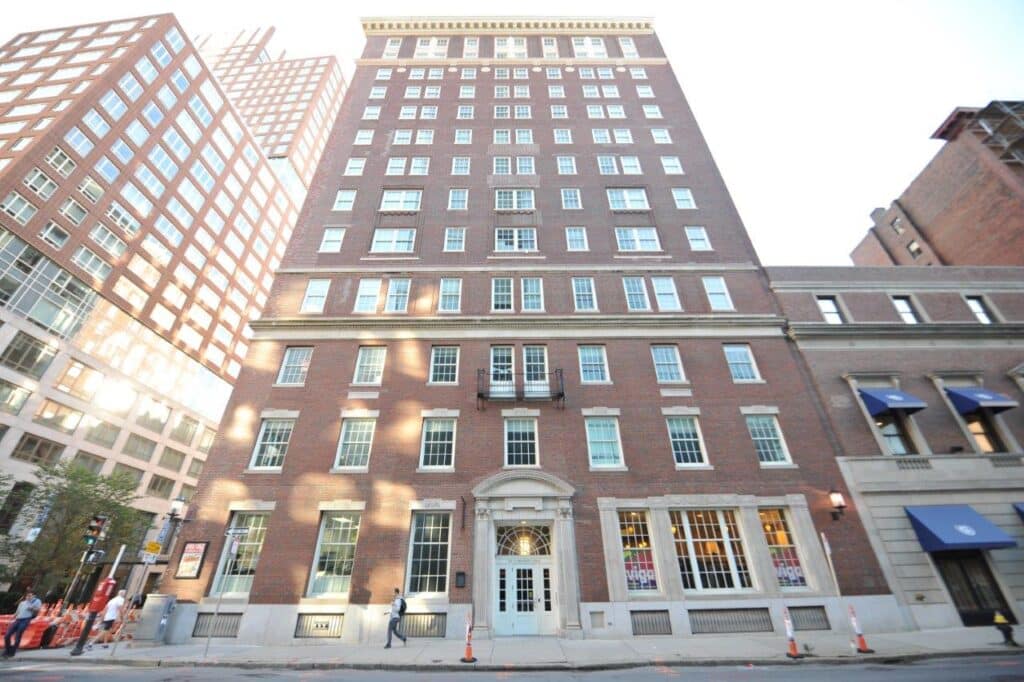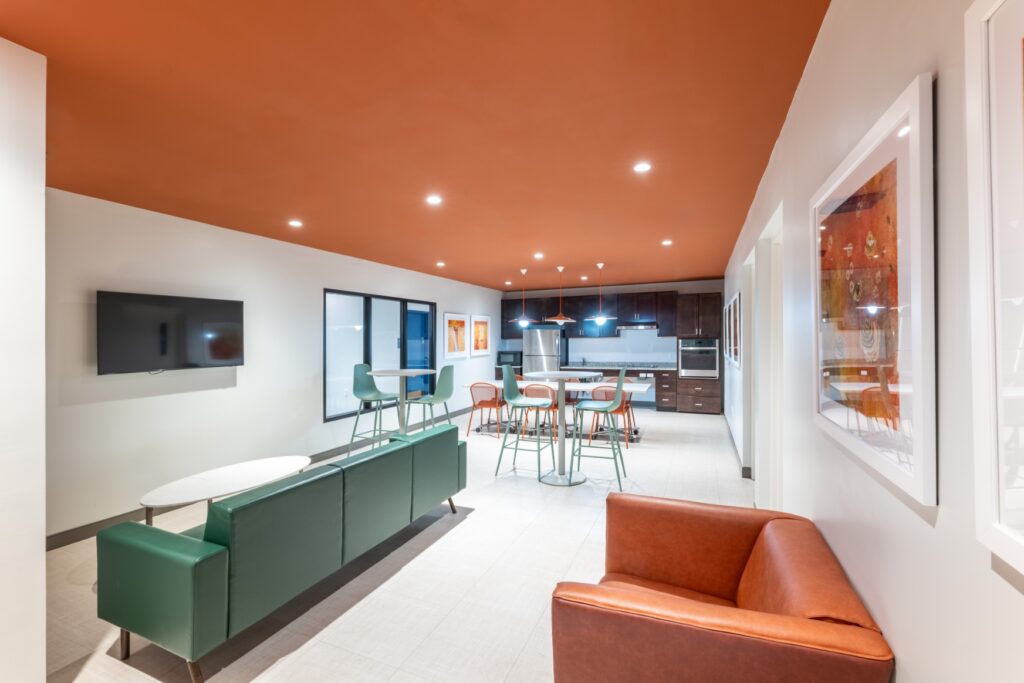A Lot Going on at Boston Back Bay Redevelopment
Service provider key for delivering supportive services

By Mark Fogarty
6 min read

The nearly 100-year-old and newly redeveloped 140 Clarendon St. in the Back Bay section of Boston has a lot going on under its roof. It has a historic building, one that housed the first Young Women’s Christian Association (YWCA) chapter in the country. It has retail, a laundry and a vegan restaurant. It has a charter school. It has offices. It has a theater space. Most importantly, it has housing, more than 200 units, split between affordable housing and apartments for those experiencing homelessness.
The 13-floor building was constructed in the 1920s, says Darcy Jameson, vice president of development at developer/owner/manager Beacon Communities.
Before COVID, the building was being sold to a developer. That would have resulted in all the building’s existing uses “going by the wayside,” she says.
“Beacon and the Mount Vernon Company approached the city of Boston and said there’s an opportunity, if we, the city and the state want to do this, to buy the YWCA, preserve the cultural and educational uses that are there and do something meaningful and impactful to help people who are experiencing homelessness. The city and the state said they were excited to support that happening, so let’s start that conversation.”
After that, “the next conversation starts with the Pine Street Inn. People know Pine Street Inn as a shelter provider, but they also do a lot of permanent supportive housing work as well. So, Pine Street Inn quickly became part of the team, and they are our service provider, providing wraparound case management services for the people in the 111 apartments for those experiencing homelessness.”
The effort will use the Housing First model, Jameson says. That’s where “you house people first and then you work to address their problems, whether substance abuse or whatever it may be.”
As the process continued, “We began to work with the city and the state to put together the financing capital stack to acquire the building to preserve all the cultural and educational uses that were there and to do all the renovation work creating the apartments and the day-to-day needs of a 100-year-old building.”
A challenge was to relocate the people already in the building as work began and then get them back into apartments afterward.
“The other source of revenue in this project was the Boston Housing Authority, which committed 210 project-based vouchers (PBVs) for all the apartments, which are studios and one-bedrooms. You can imagine what the rents are in the Back Bay of Boston, so they are a means for us to be able to support the mortgage debt on the property and generate revenue for operating costs,” including those for the service provider.
“That’s rare,” Jameson says.
A Two-Year Build
The renovations took two years to complete. “We’re fully occupied as of last December,” she says.
Jameson has high praise for the service providers at Pine Street Inn. “They are one of the best working with people who have been experiencing homelessness and putting together case management programs to support our residents.”
Pine Street also did some design work, including furnishing the apartments and supplying lounge spaces, as well as community kitchens “for people still learning to live in a residential setting again.”
Beacon’s own resident services division provides services “to everybody in the building,” such as organizing social events or helping someone experiencing food insecurity.
140 Clarendon’s status as a mixed-use development means there are lots of people coming and going, including students, theatergoers and shoppers.
The experience of having a mixed-use community? “Terrific,” says Jameson, noting that some residents volunteer at the theater. Security guards are trained to work with the various populations in the building.
Amenities include a community space in the old historic library, a wellness space, a fitness center and a computer learning center.
Beacon has 150 communities and 20,000 apartments, Jameson says. It’s a mission-driven, owner/operator, so 140 Clarendon fits nicely within what Beacon does.
A Project Done at Scale
“This one was special because of the scale we undertook,” she says. “The goal was to do something at scale.”
There was surprisingly little NIMBY-ism (Not in My Back Yard) considering how affluent a neighborhood Back Bay is. Jameson points out that many of the residents at 140 Clarendon were already in the neighborhood, just living in the streets.
“Remarkably, we did not have a lot of NIMBY-ism,” she says. “There was some, and there were people in our community meetings that raised questions and concerns, but a couple of things contributed to the success.”
Beacon organized several community meetings, as it generally does on its projects. The city of Boston planning leadership came to those meetings to issue full support of the project, not just to facilitate a community meeting. Those officials told attendees that Beacon and Pine Street Inn were the kind of entities that could successfully complete such a project.
“It made a world of difference,” Jameson says. “And knock on wood, we have not had any issues.”
“One of the things I think made this project exceptional was that the support of the city and state was unwavering. Anything that was in the way, anything that needed leadership, we had everyone’s attention, and it made a world of difference.”
Tenant experience so far? “Incredibly positive,” Jameson says. “People feel supported. They feel safe. They feel secure.”
Advertisement
A Large Capital Stack
A huge project like 140 Clarendon Street inevitably taps a large variety of financing, in this case more than $140 million. These sources include:
- $6 million from the Massachusetts Department of Housing and Community Development;
- $37.2 million permanent loan from MassHousing;
- $20.3 million for a bridge loan, also from MassHousing;
- $500,000 in MassHousing Capital Magnet Fund financing;
- $8,039,955 from the City of Boston Department of Neighborhood Development;
- $43,975,833 from Bank of America in Federal Low Income Housing Tax Credit and Historic Tax Credit equity; and
- $23,575,000 of State LIHTC equity from the Commonwealth of Massachusetts.


